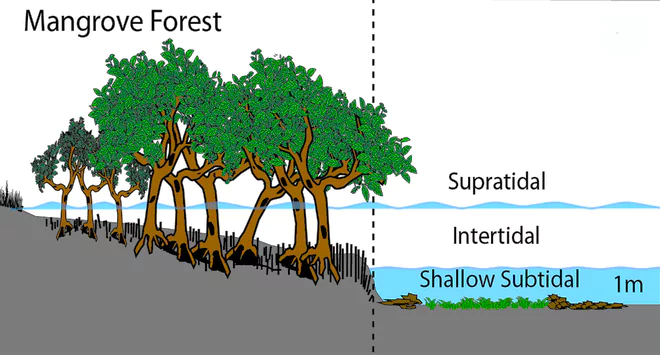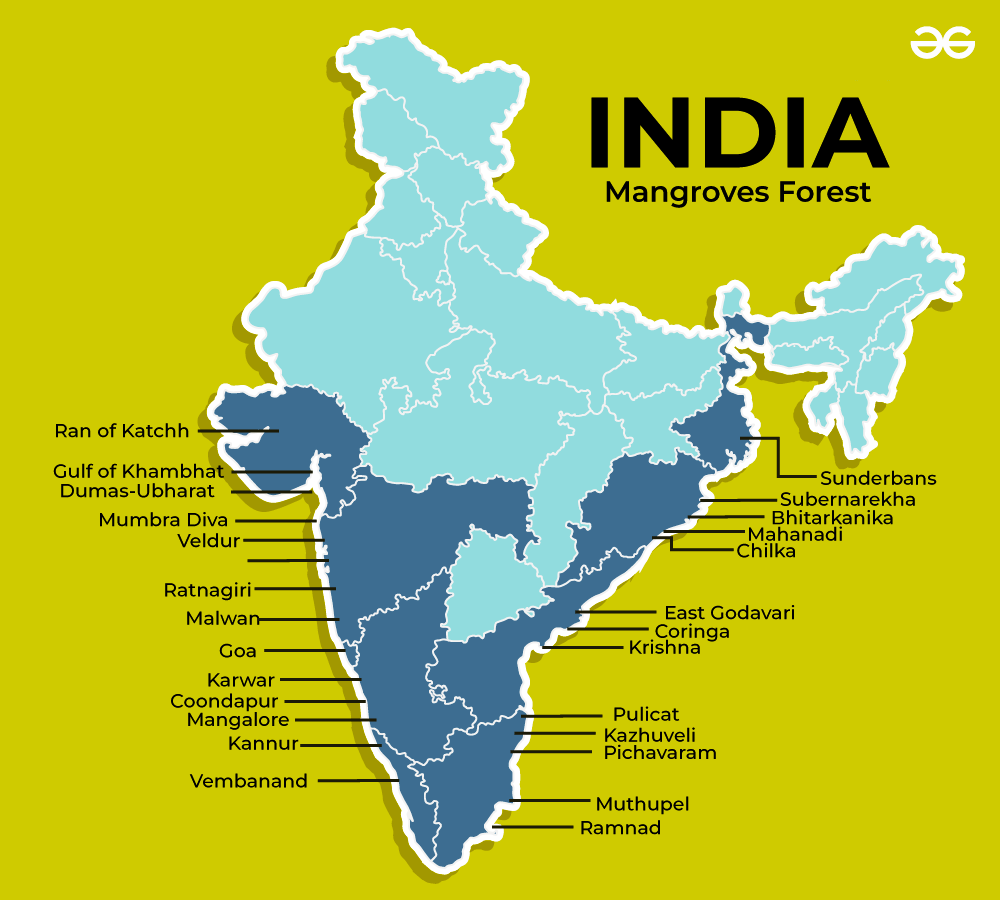![]() 6 Feb 2024
6 Feb 2024
This article is focused on Mangrove forests and the government action regarding their restoration.


| State/UT | Very Dense Mangrove | Moderately Dense Mangrove | Open Mangrove | Total | Change with respect to ISFR 2019 |
| Andhra Pradesh | 0 | 213 | 192 | 405 | 1 |
| Goa | 0 | 21 | 6 | 27 | 1 |
| Gujarat | 0 | 2 | 11 | 13 | 3 |
| Karnataka | 0 | 2 | 11 | 13 | 3 |
| Kerala | 0 | 5 | 4 | 9 | 0 |
| Maharashtra | 0 | 90 | 234 | 324 | 4 |
| Odisha | 81 | 94 | 84 | 259 | 8 |
| Tamil Nadu | 1 | 27 | 17 | 45 | 0 |
| West Bengal | 994 | 692 | 428 | 2,114 | 2 |
| A&N Islands | 399 | 168 | 49 | 616 | 0 |
| D&NH and Daman & Diu | 0 | 0 | 3 | 3 | 0 |
| Puducherry | 0 | 0 | 2 | 2 | 0 |
| Total | 1475 | 1481 | 2036 | 4992 | 17 |
Source: IFSR Report 2021
News Source: PIB
| Must Read | |
| NCERT Notes For UPSC | UPSC Daily Current Affairs |
| UPSC Blogs | UPSC Daily Editorials |
| Daily Current Affairs Quiz | Daily Main Answer Writing |
| UPSC Mains Previous Year Papers | UPSC Test Series 2024 |
<div class="new-fform">
</div>